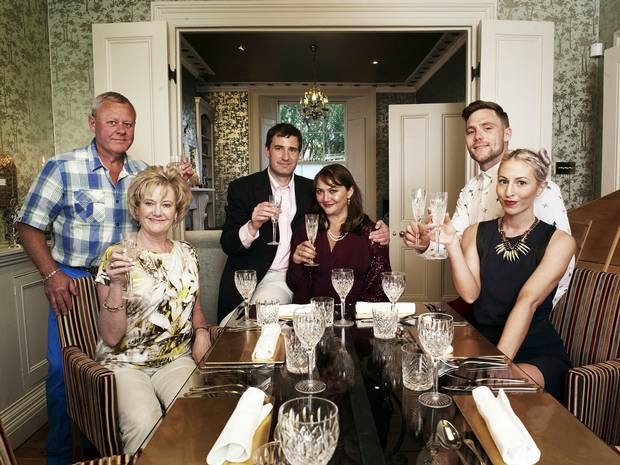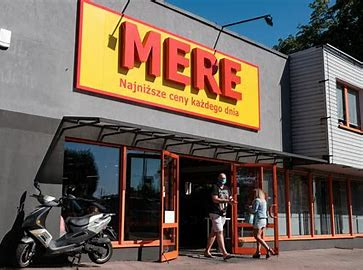WEIRD HOLIDAY ACCOMMODATION
Thinking of a holiday in the UK this year? Well, you will be joining an increasing number of holiday makers, some of which are looking for a 'different' kind of break in a 'different' kind of accommodation.
Weird and wonderful
historic buildings have become a hit with British holiday makers. A charity that restores quirky historic
buildings and rents them as holiday homes has seen bookings rise nearly 15 per
cent in the last year. A collection
of quirky historic buildings including a former pigsty and a Georgian folly (above)
have become a surprise hit with British holiday makers as people strive to find
something “exotic and different”.
The Landmark Trust, a charity which preserves small historic properties all over Britain by transforming them into unique holiday homes, has business boom by nearly 15 per cent in the last 12 months. Some of its 194 buildings, which also extend into France, Italy and the USA, are now fully booked until 2016. The charity believes its sudden popularity is driven by people’s desire to avoid the hassle of travelling abroad while still enjoying a unique and exciting holiday experience.
Proving the most popular is Astley Castle (above), a 12th century fortified manor owned by Elizabeth Woodville, wife of King Edward IV, which had fallen into disrepair until it was restored in 2005 with a modern twist, winning it the 2013 Stirling prize for architecture. The Castle, in Nuneaton, Warwickshire (above), which sleeps eight people for less than £200 a night, is fully booked for the next two years. Other hit properties are Luttrell's Tower, a Georgian folly near Southampton, Hants, and a former Victorian pigsty near Whitby, North Yorks, which was built in the style of a Greek temple. The London townhouse of 20th century poet John Betjeman, the 500-year-old Abbey Gatehouse in Tewkesbury, Glos , the Victorian railway station building at Alton, Staffs (below), and a small former granite chapel on the edge of Dartmoor in Devon are other weird holiday homes.
Prices start at about £10 a night for cosy cottages in winter while a week-long stay at the most expensive properties in the height of summer can cost up to £3000. The fees are ploughed back into the upkeep and restoration of the properties. Emma Keay, director of the Landmark Trust, said she thought the growing popularity of the charity’s properties was driven by a desire to experience something exotic and authentic without needing to travel abroad. She said: “Everyone has got a bit bored, for lots of reasons, with just flying to the south of Spain for their holidays. I guess the reasons are partly financial and to do with travel and the chaos of airports and misery of having to put all your belongings in plastic bags and take your shoes off and all that. Avoiding all that is appealing and the thought you can have a holiday day in the UK that not just avoids going overseas but is much better because it is exotic and different and interesting and wonderful. Our buildings are real historic buildings and people can live and breathe them, they are not like going to the medieval area of Legoland, they are medieval. I think we all hanker after that authenticity at the moment, we want to experience these things for ourselves and we want something different. People don’t just want to be ushered around a historic building cordoned off from the valuables with someone giving a worthy talk about its history, they want to stay there and sleep in the beds and light the fires.”
The Landmark Trust was founded in 1965 by Conservative politician Sir John Smith to restore and preserve small historic buildings around Britain not protected by the National Trust. That year he bought Church Cottage, an abandoned property in Cardigan, Wales, dating back to the 1850s, and set about restoring it to its former glory. The first Landmark Trust handbook had three properties, Church Cottage (above), Tower Hill Lodge in Camarthen and the Mill House in Coombe, Cornwall. By the time Sir John died in 2007 he had built the charity into a thriving organisation with 194 houses all over Britain and some in France, Italy and the USA.
www.landmarktrust.org.uk
The Landmark Trust, a charity which preserves small historic properties all over Britain by transforming them into unique holiday homes, has business boom by nearly 15 per cent in the last 12 months. Some of its 194 buildings, which also extend into France, Italy and the USA, are now fully booked until 2016. The charity believes its sudden popularity is driven by people’s desire to avoid the hassle of travelling abroad while still enjoying a unique and exciting holiday experience.
Proving the most popular is Astley Castle (above), a 12th century fortified manor owned by Elizabeth Woodville, wife of King Edward IV, which had fallen into disrepair until it was restored in 2005 with a modern twist, winning it the 2013 Stirling prize for architecture. The Castle, in Nuneaton, Warwickshire (above), which sleeps eight people for less than £200 a night, is fully booked for the next two years. Other hit properties are Luttrell's Tower, a Georgian folly near Southampton, Hants, and a former Victorian pigsty near Whitby, North Yorks, which was built in the style of a Greek temple. The London townhouse of 20th century poet John Betjeman, the 500-year-old Abbey Gatehouse in Tewkesbury, Glos , the Victorian railway station building at Alton, Staffs (below), and a small former granite chapel on the edge of Dartmoor in Devon are other weird holiday homes.
Prices start at about £10 a night for cosy cottages in winter while a week-long stay at the most expensive properties in the height of summer can cost up to £3000. The fees are ploughed back into the upkeep and restoration of the properties. Emma Keay, director of the Landmark Trust, said she thought the growing popularity of the charity’s properties was driven by a desire to experience something exotic and authentic without needing to travel abroad. She said: “Everyone has got a bit bored, for lots of reasons, with just flying to the south of Spain for their holidays. I guess the reasons are partly financial and to do with travel and the chaos of airports and misery of having to put all your belongings in plastic bags and take your shoes off and all that. Avoiding all that is appealing and the thought you can have a holiday day in the UK that not just avoids going overseas but is much better because it is exotic and different and interesting and wonderful. Our buildings are real historic buildings and people can live and breathe them, they are not like going to the medieval area of Legoland, they are medieval. I think we all hanker after that authenticity at the moment, we want to experience these things for ourselves and we want something different. People don’t just want to be ushered around a historic building cordoned off from the valuables with someone giving a worthy talk about its history, they want to stay there and sleep in the beds and light the fires.”
The Landmark Trust was founded in 1965 by Conservative politician Sir John Smith to restore and preserve small historic buildings around Britain not protected by the National Trust. That year he bought Church Cottage, an abandoned property in Cardigan, Wales, dating back to the 1850s, and set about restoring it to its former glory. The first Landmark Trust handbook had three properties, Church Cottage (above), Tower Hill Lodge in Camarthen and the Mill House in Coombe, Cornwall. By the time Sir John died in 2007 he had built the charity into a thriving organisation with 194 houses all over Britain and some in France, Italy and the USA.
www.landmarktrust.org.uk







Comments
Post a Comment